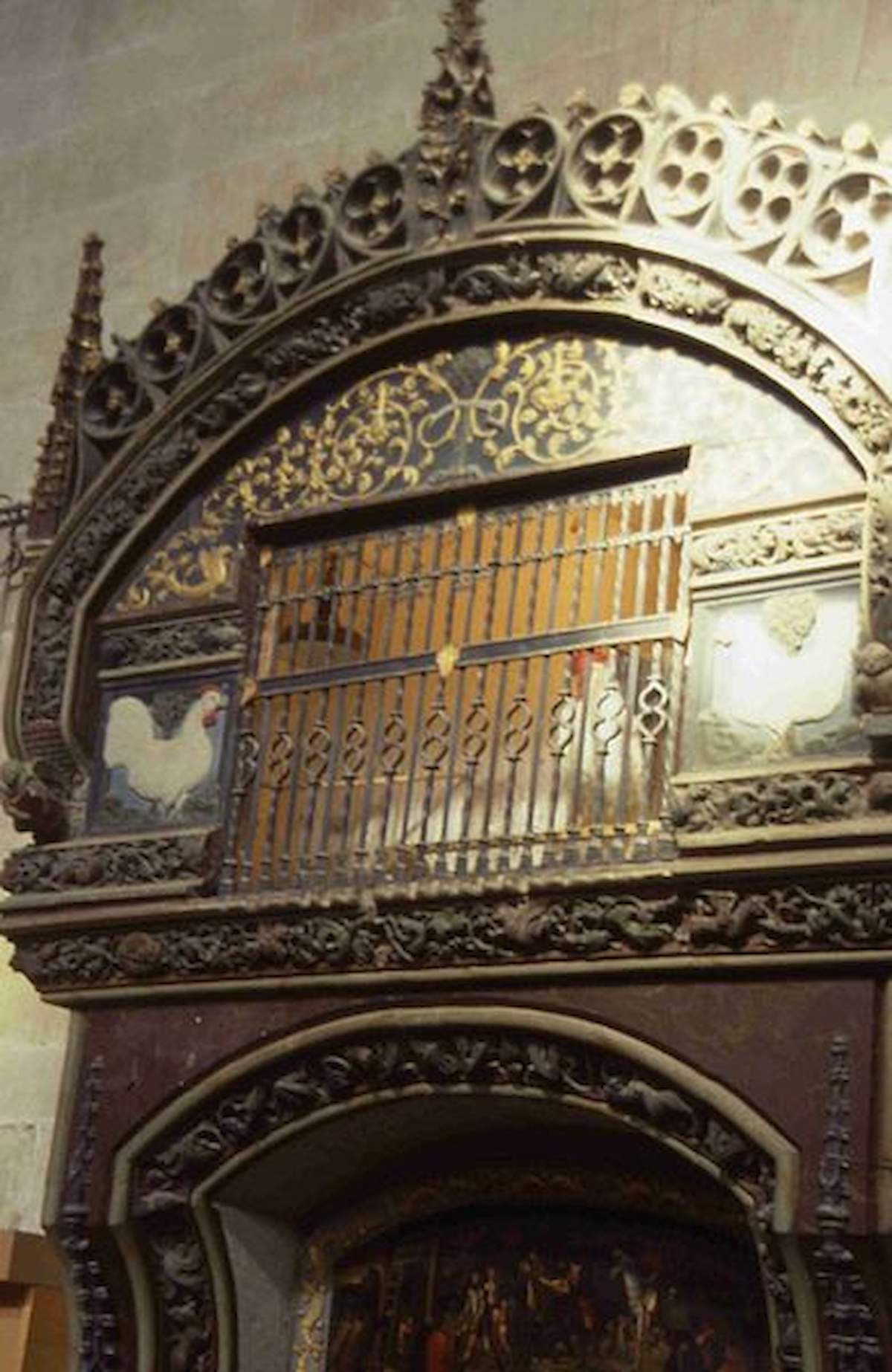
The miracle of the rooster and the hen
In the first of a series that looks at the many miracles on the Camino, we find out why there is a chicken coop in a church.
At the Cathedral of Santo Domingo de la Calzada in the village of Santo Domingo de la Calzada in La Rioja there is a chicken coop in the choir loft. It serves as a reminder of a miracle that took place there in the 14th century when a young German, Hugonell from Xanten, was on a pilgrimage with his parents.
The German family decided to rest at an inn in Santo Domingo de la Calzada. The daughter of the owner of the inn fell in love with Hugonell and made advances to him that he rejected. The spurned girl was furious and decided to exact her revenge. She hid a silver cup in his bag and informed the authorities that the youth had stolen it. Poor Hugonell was labeled a thief and sentenced to death by hanging, which was the punishment at that time.
His parents, saddened by their son’s death, continued their pilgrimage to Santiago de Compostela. On their return journey they decided to visit the grave of their dead son in Santo Domingo. However, when they arrived there, they found their son still hanging on the gallows. Suddenly, they heard his voice and he told them that Santo Domingo (St. Dominic) had saved his life. His parents rushed to see the mayor to take down their son from the gallows. The mayor was eating chicken for dinner. Upset at being interrupted he told the couple: ‘Your son is as alive as this rooster and hen that I was feasting on before you interrupted me.’
Suddenly, the two beheaded cooked birds came to life, sprouted feathers and beaks, and jumped from the plate. They began to dance, sing and crow happily to testify in favor of the wrongly accused pilgrim.
Today, the henhouse in the Cathedral of Santo Domingo de la Calzada contains a rooster and a hen, which are said to be the descendants of the dancing birds. Other descendants are kept in the local pilgrimage refuge, and they are swapped each month. If you look at the front of the saint’s tomb, there is a niche depicting a rooster and a hen to commemorate the miracle.
In medieval times, pilgrims gathered the feathers of these favored birds, or got them from the priest, and fixed them to their hats. Another tradition claimed that if the birds ate breadcrumbs from the end of a pilgrim’s staff, the pilgrim would arrive safely in Santiago de Compostela. A wayside shrine (hornacina) built in 1445 holds a relic associated with the miracle: a piece of wood from the gallows from which Hugonell was hung. Chicken-shaped pastries called milagros del santo (saint’s miracles) are sold in the village to commemorate the miracle. The popular Spanish saying ‘Santo Domingo de la Calzada / cantó la gallina después de asada’ (Santo Domingo de la Calzada / Where a chicken sang after being roasted) is also a reference to the miracle.